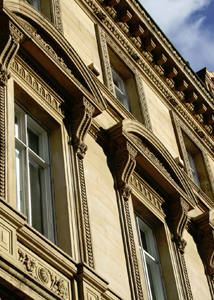 We are able to carry out historic research on a site or building to establish the architectural and historic interests of a building or area.
We are able to carry out historic research on a site or building to establish the architectural and historic interests of a building or area.
Once this information is gathered it will be used to guide practical repair and maintenance work, or input into a wider conservation plan.
Desktop and on-site surveys may include looking at the building’s archaeology/records and will be used to improve our understanding of historical assets of all types of property and establish what changes may be permissible within the remit of relevant consents and regulations.
Historic Building Surveys London
We can thereafter offer advice in relation to design management and overseeing repair, conversion or extension projects to Listed Buildings. We are involved in all stages of the construction process from initial clients’ briefing to final completion, including feasibility studies, and producing tender reports and specifications.
For historic building surveys in London, Surrey and Sussex, get in touch with our team today at 01737 829070.
Listed Historic Building Advice
A listed historic building is a structure that has been officially recognised and designated as possessing special architectural or historic interest, thereby granting it legal protection. This designation is assigned by the relevant heritage bodies, such as Historic England, Cadw (in Wales), Historic Environment Scotland, or the Northern Ireland Environment Agency.
Listed buildings can range from grand mansions and castles to modest cottages, churches, bridges, and even public structures like telephone boxes or milestones. The listing process identifies and celebrates buildings that are significant due to their architectural design, construction methods, historical associations, or contribution to the character and heritage of a particular area.
Buildings or structures can be listed under different grades, reflecting their level of importance:
Grade I: Buildings of exceptional interest, representing some of the most significant examples of their kind.
Grade II*: Particularly important buildings of more than special interest.
Grade II: Buildings of special interest, warranting every effort to preserve them.
Once a building is listed, it becomes subject to legal protection, meaning that any alterations, extensions, or demolition work that could potentially affect its special character or historic interest requires prior consent from the local planning authority.
Listed buildings are subject to specific regulations and requirements when it comes to alterations, repairs, and maintenance. These measures are in place to ensure that the historic character and significance of the building are preserved and not compromised.
Specialist advice is needed for several reasons:
1. Compliance with listed building regulations: Listed building regulations can be complex, with specific guidelines regarding the materials, techniques, and approaches that can be used for alterations or repairs. An expert advisor can ensure that any proposed work complies with these regulations and avoids inadvertently damaging or compromising the historic fabric of the building.
2. Preservation of historic character: Listed buildings often feature unique architectural elements, construction methods, or materials that require specialist knowledge and expertise to properly maintain or restore. Inappropriate alterations or repairs can irreparably damage the historic character and significance of the building.
3. Planning and consent processes: Any proposed changes to a listed building typically require listed building consent from the local planning authority. An expert advisor can guide clients through the application process, provide the necessary documentation and justification, and increase the chances of obtaining approval.
4. Access to specialist contractors: Working on listed buildings often requires the expertise of specialist contractors who are familiar with traditional construction methods, materials, and techniques. A building surveyor with experience in listed buildings can recommend and coordinate the appropriate tradespeople for the project.
5. Heritage impact assessments: In some cases, a heritage impact assessment may be required to evaluate the potential impact of proposed alterations on the historic significance of the building. A building surveyor can assist in conducting these assessments and providing professional recommendations.
A building surveyor specialising in listed historic buildings can provide a wide range of advice and services, including:
1. Condition surveys and assessments: Conduct thorough inspections and evaluations of the building’s condition, identifying any defects, structural issues, or areas requiring repair or maintenance.
2. Materials and techniques guidance: Advising on the appropriate materials, construction techniques, and approaches to be used for alterations, repairs, or maintenance, ensuring they are compatible with the historic fabric of the building and comply with regulations.
3. Planning and consent assistance: Guiding clients through the listed building consent process, preparing necessary documentation, drawings, and specifications, and representing clients in discussions with the local planning authority.
4. Project management: Overseeing and coordinating the work on listed buildings, ensuring that all alterations or repairs are carried out in accordance with approved plans, using appropriate materials and techniques, and adhering to best practices for heritage conservation.
5. Conservation advice: Providing guidance on the best practices for conserving and preserving the historic character and significance of the building, including advice on maintenance schedules, environmental monitoring, and preventative measures.
6. Heritage impact assessments: Conduct assessments to evaluate the potential impact of proposed alterations on the historic significance of the building and provide recommendations to minimise or mitigate any adverse effects.
7. Specialist contractor sourcing: Identifying and recommending skilled and experienced contractors, craftspeople, and specialists who are knowledgeable in working with traditional materials and techniques required for listed buildings.
8. Grant and funding advice: Assist clients in identifying and applying for grants or funding opportunities available for the repair, maintenance, or conservation of listed historic buildings.